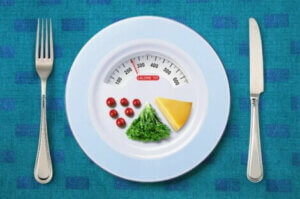What is Energy Metabolism?

When you start to learn more about the world of dietetics and nutrition, you quickly come across concepts such as metabolism. In many cases, athletes only have a vague idea of what the metabolism actually is, and don’t understand it fully. In this article, we’ll delve deeper into the concept of energy metabolism, to help you understand what it’s all about.
What is energy metabolism?
Firstly, it’s important to recognize that the human body isn’t just capable of performing mechanical functions such as movement. At any given moment, the body is carrying out numerous different energy-consuming processes, such as regulating body temperature, digesting food, and hormone secretion.
This becomes even more obvious when we look at factors on a cellular level; every cell in the body has to receive an adequate supply of energy and oxygen to stay alive.
The cells themselves receive nutrients and use them in complex processes such as glycolysis and the Krebs cycle, which they use to obtain energy. What’s more, some actions can cause damage to the cells, meaning that they need to repair in order to continue functioning properly.
In that last paragraph, we’ve given you a simplified explanation of the concepts of anabolism and catabolism – the two fundamental processes of energy metabolism. We can define metabolism as the set of biochemical and physiological reactions that occur at the microscopic and macroscopic levels. Its purpose is to maintain the integrity of the body and allow it to stay alive. Let’s take a look at these two concepts in greater detail.
Energy metabolism – catabolism
Catabolism is a process by which cells obtain energy from large compounds, which they then use as fuel. Glucose – or sugar – is the classic example, although cells can also use fat or protein as energy sources.

In this process, large molecules are broken into smaller ones, releasing energy into the body. This energy is vital and will help to maintain a number of important functions that are essential to the body’s survival.
Another concept that frequently comes up in the world of sports nutrition is that of basal metabolic rate. This refers to the amount of calories the body needs to perform essential functions, not counting the calories expended during physical activity. These calories are obtained by catabolizing the food we eat throughout the day, or from energy reserves, such as fat.
Energy metabolism – anabolism
Anabolism is the opposite process – ie. large molecules are synthesized from smaller ones. It’s an endergonic process, meaning that energy is required for it to be carried out. As you can probably guess, anabolism is an important factor in determining the basal metabolic rate, as it’s responsible for repairing structures throughout the body. One example might be repairing muscle tissue after intense physical exercise.
Because anabolism allows cells to divide more easily, it’s also responsible for cell regeneration in different bodily tissues.
Anabolism is essential for increasing muscle mass and improving athletic performance. In fact, anabolic steroids get their name from this process. They work by mimicking the anabolic effect of hormones such as testosterone, from which the steroids are derived.
Energy balance: why is it so important?
Once you understand that energy metabolism is a sort of balancing act between anabolism and catabolism – or in other words, between processes that produce energy, and processes that use it – you can start to understand the concept of energy balance.
The human body is a calorie-burning machine. On average, humans burn around 2,000 calories a day, including both basal metabolic rate and physical activity. In athletes, whose bodies are better adapted to expending energy, you may find that they burn up to 3,000 or 4,000 calories a day.

These calories come from both food and energy reserves. Depending on how much you’ve eaten that day, you may find yourself in a state of calorie deficit or calorie surplus. This is what makes us lose or gain weight.
Diets focused on burning fat are based on the idea of maintaining a state of calorie deficit. Conversely, those who aim to gain muscle tissue in order to optimize their athletic performance need to try and maintain a calorie surplus.
The importance of understanding your own metabolism
In this article, we’ve seen – albeit in fairly simple terms – the basic principles of energy metabolism. This process involves a series of reactions, including anabolism and catabolism. Both of these processes are essential for keeping our bodies alive.
We would also encourage you to do your own research on the topic, ideally using academic sources. This is the best way to understand your own body and start using different techniques to achieve your fitness goals.
When you start to learn more about the world of dietetics and nutrition, you quickly come across concepts such as metabolism. In many cases, athletes only have a vague idea of what the metabolism actually is, and don’t understand it fully. In this article, we’ll delve deeper into the concept of energy metabolism, to help you understand what it’s all about.
What is energy metabolism?
Firstly, it’s important to recognize that the human body isn’t just capable of performing mechanical functions such as movement. At any given moment, the body is carrying out numerous different energy-consuming processes, such as regulating body temperature, digesting food, and hormone secretion.
This becomes even more obvious when we look at factors on a cellular level; every cell in the body has to receive an adequate supply of energy and oxygen to stay alive.
The cells themselves receive nutrients and use them in complex processes such as glycolysis and the Krebs cycle, which they use to obtain energy. What’s more, some actions can cause damage to the cells, meaning that they need to repair in order to continue functioning properly.
In that last paragraph, we’ve given you a simplified explanation of the concepts of anabolism and catabolism – the two fundamental processes of energy metabolism. We can define metabolism as the set of biochemical and physiological reactions that occur at the microscopic and macroscopic levels. Its purpose is to maintain the integrity of the body and allow it to stay alive. Let’s take a look at these two concepts in greater detail.
Energy metabolism – catabolism
Catabolism is a process by which cells obtain energy from large compounds, which they then use as fuel. Glucose – or sugar – is the classic example, although cells can also use fat or protein as energy sources.

In this process, large molecules are broken into smaller ones, releasing energy into the body. This energy is vital and will help to maintain a number of important functions that are essential to the body’s survival.
Another concept that frequently comes up in the world of sports nutrition is that of basal metabolic rate. This refers to the amount of calories the body needs to perform essential functions, not counting the calories expended during physical activity. These calories are obtained by catabolizing the food we eat throughout the day, or from energy reserves, such as fat.
Energy metabolism – anabolism
Anabolism is the opposite process – ie. large molecules are synthesized from smaller ones. It’s an endergonic process, meaning that energy is required for it to be carried out. As you can probably guess, anabolism is an important factor in determining the basal metabolic rate, as it’s responsible for repairing structures throughout the body. One example might be repairing muscle tissue after intense physical exercise.
Because anabolism allows cells to divide more easily, it’s also responsible for cell regeneration in different bodily tissues.
Anabolism is essential for increasing muscle mass and improving athletic performance. In fact, anabolic steroids get their name from this process. They work by mimicking the anabolic effect of hormones such as testosterone, from which the steroids are derived.
Energy balance: why is it so important?
Once you understand that energy metabolism is a sort of balancing act between anabolism and catabolism – or in other words, between processes that produce energy, and processes that use it – you can start to understand the concept of energy balance.
The human body is a calorie-burning machine. On average, humans burn around 2,000 calories a day, including both basal metabolic rate and physical activity. In athletes, whose bodies are better adapted to expending energy, you may find that they burn up to 3,000 or 4,000 calories a day.

These calories come from both food and energy reserves. Depending on how much you’ve eaten that day, you may find yourself in a state of calorie deficit or calorie surplus. This is what makes us lose or gain weight.
Diets focused on burning fat are based on the idea of maintaining a state of calorie deficit. Conversely, those who aim to gain muscle tissue in order to optimize their athletic performance need to try and maintain a calorie surplus.
The importance of understanding your own metabolism
In this article, we’ve seen – albeit in fairly simple terms – the basic principles of energy metabolism. This process involves a series of reactions, including anabolism and catabolism. Both of these processes are essential for keeping our bodies alive.
We would also encourage you to do your own research on the topic, ideally using academic sources. This is the best way to understand your own body and start using different techniques to achieve your fitness goals.
All cited sources were thoroughly reviewed by our team to ensure their quality, reliability, currency, and validity. The bibliography of this article was considered reliable and of academic or scientific accuracy.
- Ravussin, E., & Bogardus, C. (1992). A brief overview of human energy metabolism and its relationship to essential obesity. In American Journal of Clinical Nutrition (Vol. 55, Issue SUPPL. 1). American Society for Nutrition. https://doi.org/10.1093/ajcn/55.1.242s
- Lam, Y. Y., & Ravussin, E. (2016). Analysis of energy metabolism in humans: A review of methodologies. In Molecular Metabolism (Vol. 5, Issue 11, pp. 1057–1071). Elsevier GmbH. https://doi.org/10.1016/j.molmet.2016.09.005
- Galgani, J., & Ravussin, E. (2008). Energy metabolism, fuel selection and body weight regulation. In International Journal of Obesity (Vol. 32, Issue SUPPL. 7, p. S109). NIH Public Access. https://doi.org/10.1038/ijo.2008.246
- Physical activity and resting metabolic rate. – PubMed – NCBI. (n.d.). Retrieved May 1, 2020, from https://www.ncbi.nlm.nih.gov/pubmed/14692598
This text is provided for informational purposes only and does not replace consultation with a professional. If in doubt, consult your specialist.








